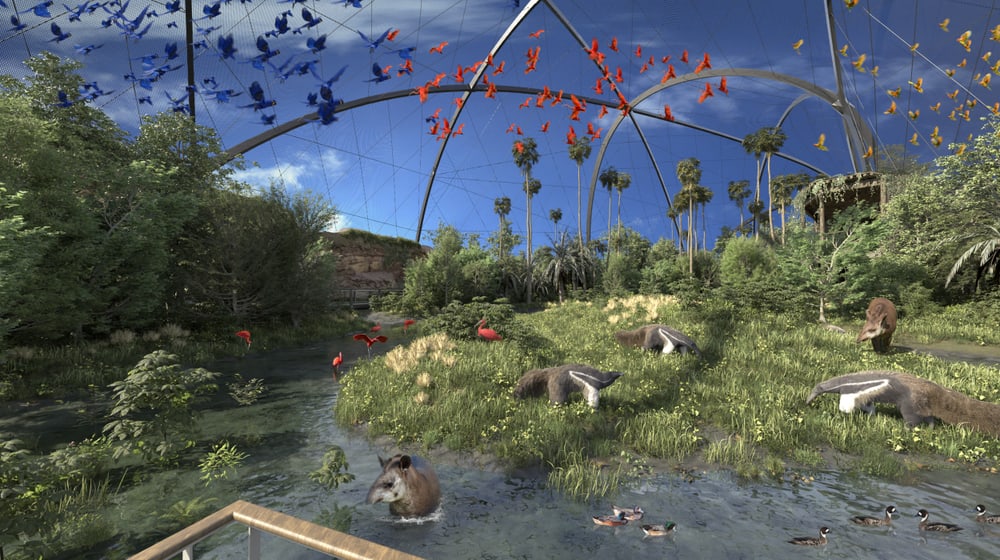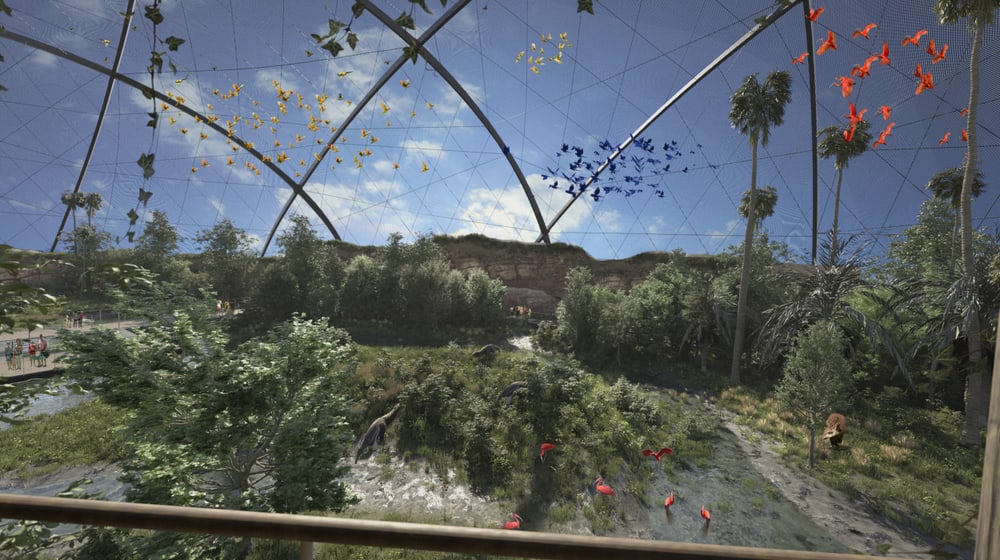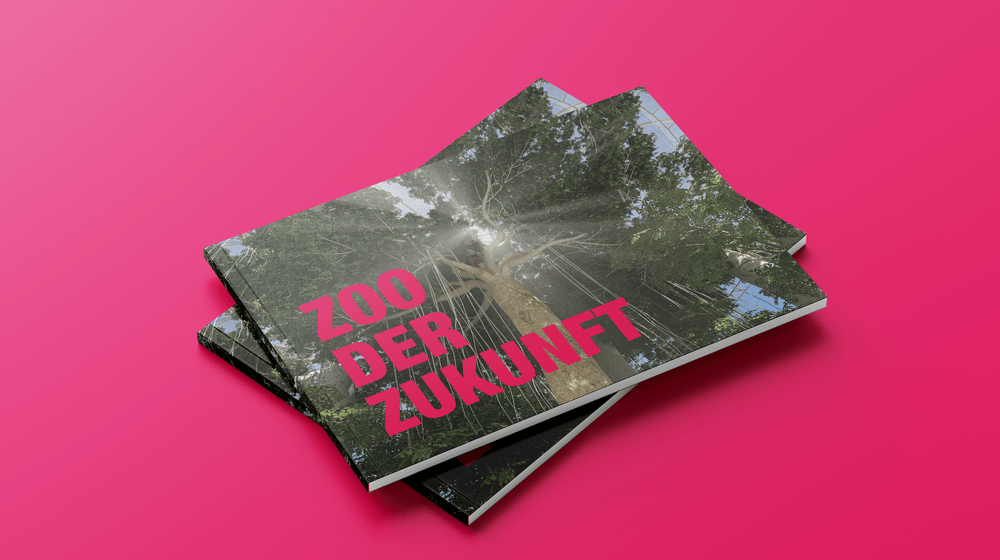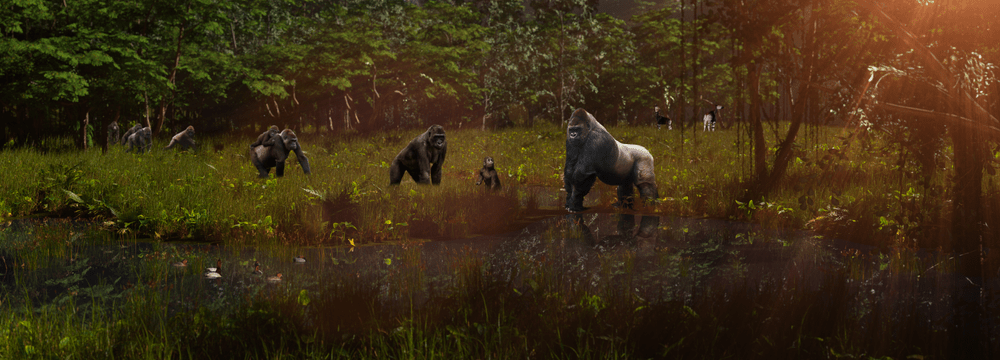
11 habitats by 2050
The most obvious elements of the development plan are the planned construction projects. By 2050, Zoo Zurich – on its existing area of 27 hectares – will consist of 11 large-scale habitats.
The zoo is continuing what it begun with pioneering complexes such as Masoala Rainforest and the Lewa Savanna: to create new standards both in animal husbandry and in the experiences for visitors to the zoo.
The zoo is focusing on three-dimensionality in its new facilities: Large aviaries explores the skies, large bodies of water the depths. This opens up new perspectives for visitors to the zoo, and offers diverse living conditions for the animals. Birds, for example, will in future be able to fly in flocks, and monkeys will be able to climb into the highest treetops.
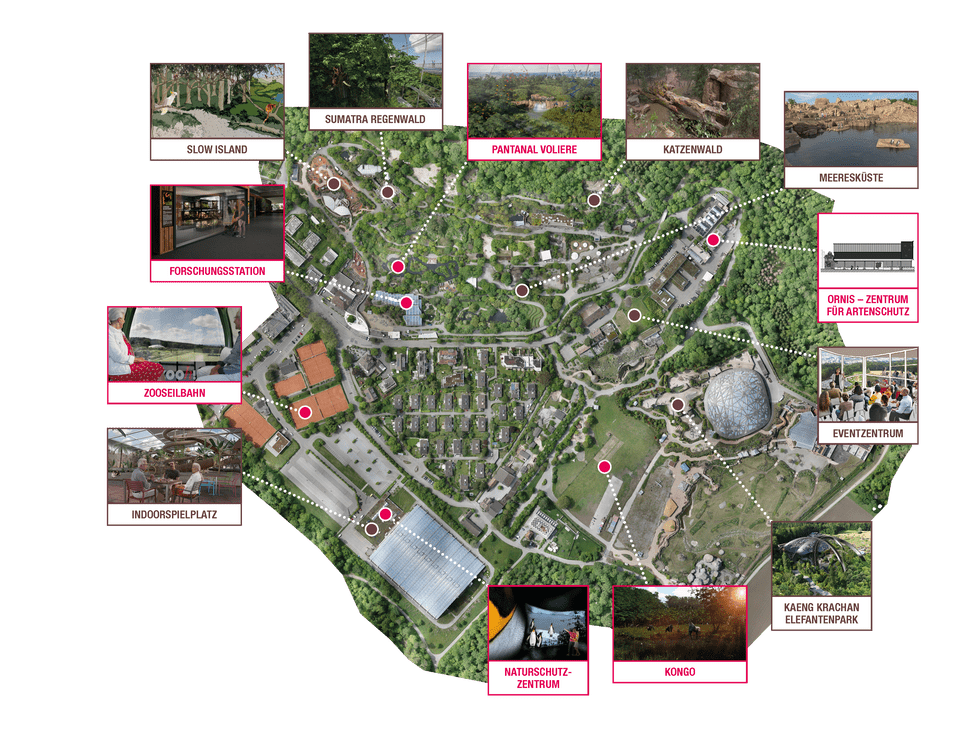
Overview of the construction projects. Aerial view: Zoo Zurich, Basler & Hofmann
Construction projects by 2030
Completed:
- Ornis – Center for Species Protection (2021, background facility, no visitor area)
- Conservation Center (2023)
Concrete planning:
- Panterra (2025)
- Research station (2025)
- Pantanal aviary (2028)
- Zoo cable car (2028)
- Congo (2029)
Construction projects after 2031 (in extended design phase)
- Sumatra rainforest
- Seacoast
- Slow Island
- Aviary in the Kaeng Krachan Elephant Park
- Indoor play area
- Event center
Animation film of the new habitats
First major projects: Pantanal aviary and Congo
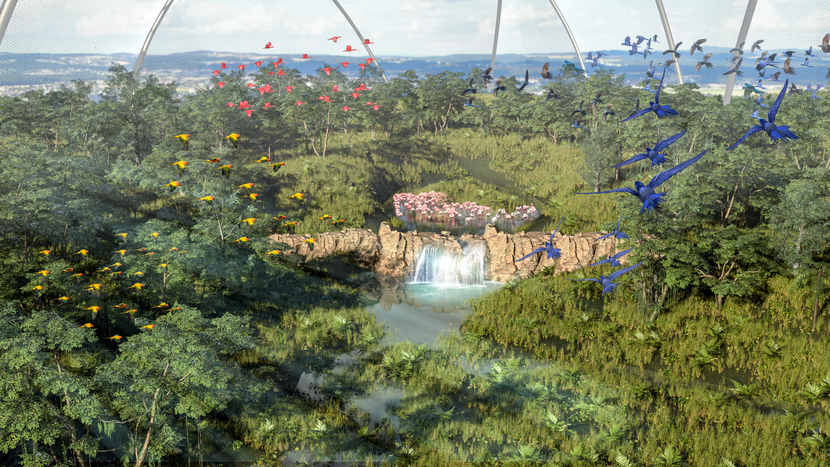
The Pantanal aviary planned for 2028. Image: Region Five Media
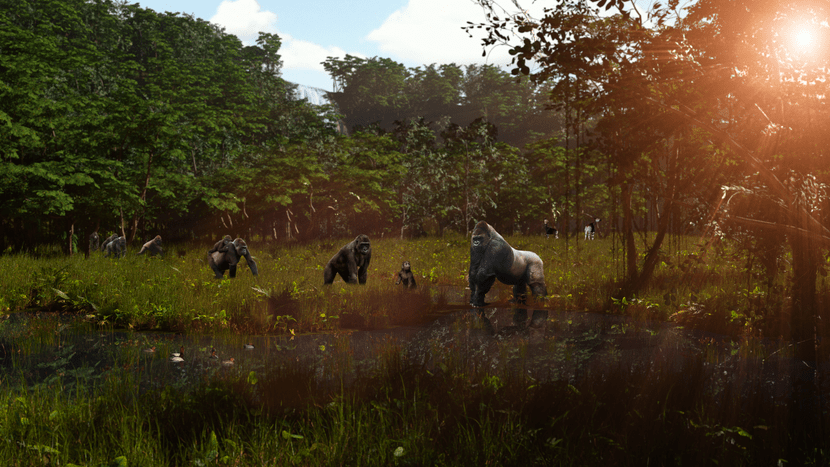
The Congo planned for 2029. Image: Region Five Media
The Pantanal aviary (opening in 2028) and Congo (opening in 2029) projects will be the first of the planned large-scale facilities to be implemented. In the Pantanal aviary, visitors to the zoo will be at eye level with large flying parrots. In the Congo, you can watch gorillas and okapis as they graze in a large rainforest clearing in the shallow water of the swamp. The Pantanal aviary is being built at the site of today's Pantanal, the Congo on the still undeveloped area above the Lewa savanna.
Help us!
Support the construction of the new Pantanal aviary and help to bring this section of the South American wetland with its unique fauna to us on the Zürichberg. We look forward to your contribution. Many thanks!
360° video screen & public research
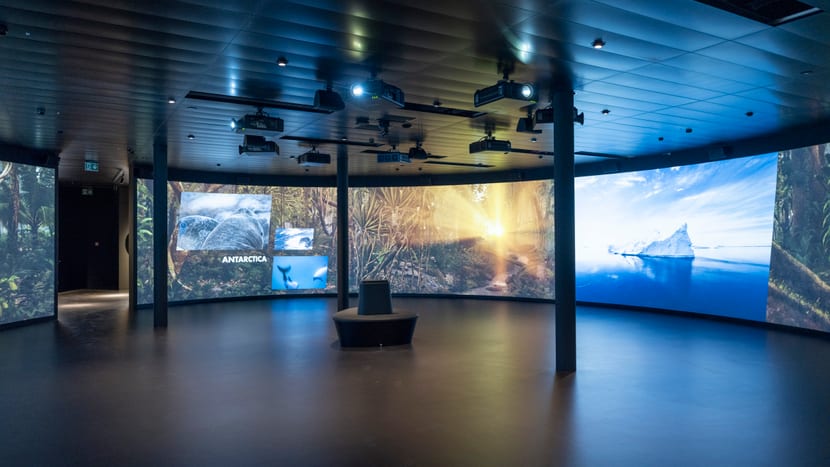
The Centre of nature conservation inaugurated in 2023. Image: Zoo Zürich, Nick Soland
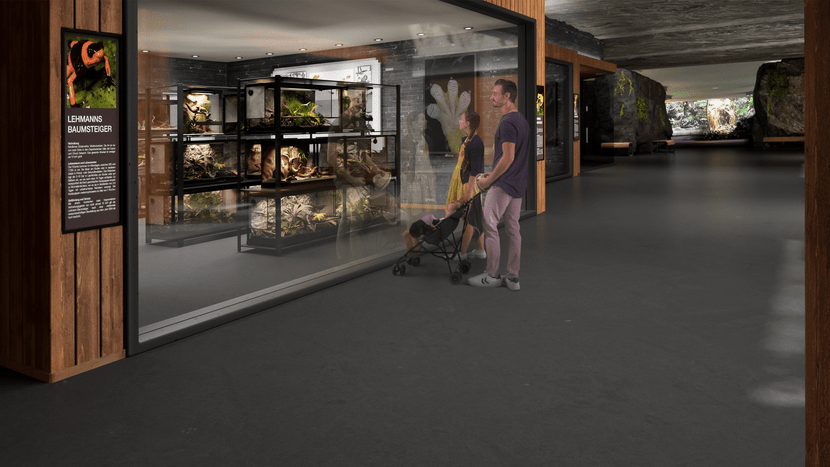
The research center planned for 2025. Image: Region Five Media
But there will be something new for visitors to the zoo beforehand: In 2023, on the 20th anniversary of the Masoala Rainforest, the zoo opened its new nature centre of nature conservation. Here, visitors to the zoo can lose themselves in the zoo's global nature conservation projects in an immersive experience on a 360° large screen. In 2025, we will also open a research station in the Exotarium. Research is one of our four main tasks as a zoo, but it is often unseen by visitors. With the new research station, we are making parts of this area of activity accessible to our visitors.
Sumatran rainforest And seacoast
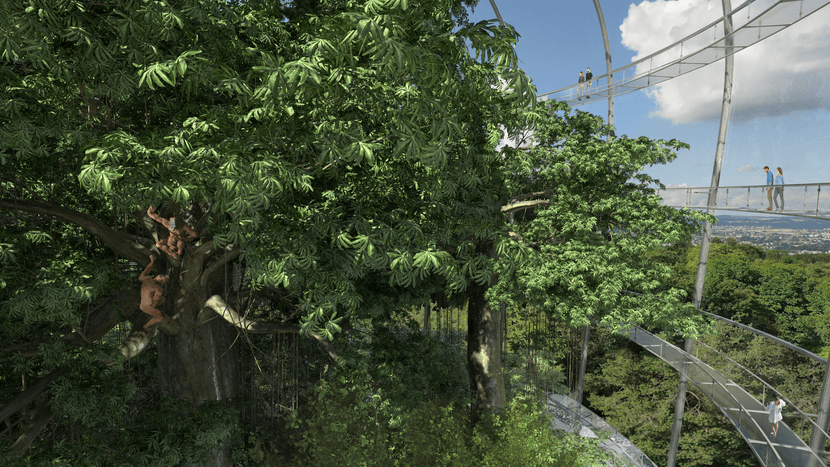
Sumatra rainforest, planned after 2030. Image: Region Five Media
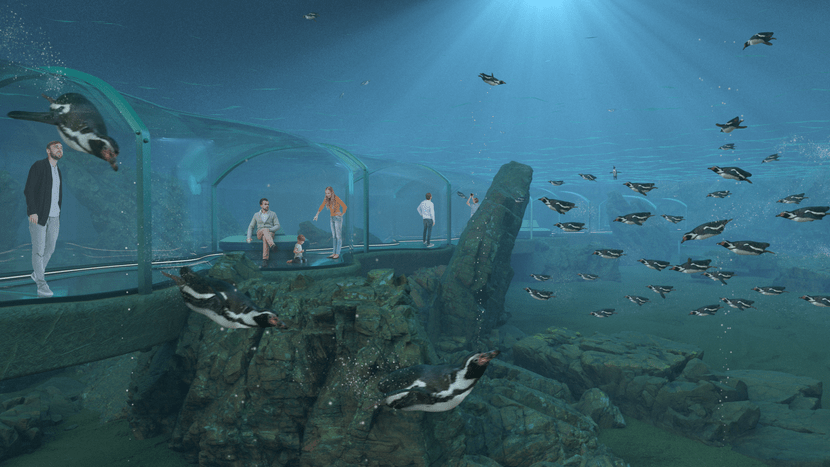
Seacoast, planned after 2030. Image: Region Five Media
After 2030, two major projects (the Sumatran rainforest and seacoast) will shape the zoo’s development. In the Sumatran rainforest, visitors to the zoo will discover swimming Malaysian tapirs and then climb to dizzying heights to the orangutans in the treetops of the forty-meter-high primeval forest giants. And on the seacoast, visitors will observe penguins and sea lions, hear the unmistakable sound of the waves and imagine they are right on the ocean.
